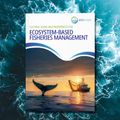EcoScope research demo computes ecosystem risk hotspots in the Mediterranean
EcoScope researchers led by Gianpaolo Coro of Italy’s National Research Council’s Institute of Information Science and Technology (ISTI-CNR) demonstrated a novel methodology for identifying hotspots of ecosystem risks, using the Mediterranean Basin – “a region with intense anthropogenic pressures and significant climatic vulnerabilities” – as a case study.
Using the methodology, the team identified different types of “high-risk hotspots” – highlighting overlaps of such risks as habitat loss, overfishing, clandestine fishing, and climate change stressors – in the Western Mediterranean, the Tyrrhenian Sea, the Adriatic Sea, the Strait of Sicily, the Aegean Sea, and eastern Turkey. The resulting maps of high-risk areas in the Mediterranean can be used to develop monitoring and management strategies, as well as ecosystem models and spatial pans, supporting sustainable development of marine and coastal zones. The workflow methodology can be applied in any geographical area.
The study presenting the methodology, titled “Computing ecosystem risk hotspots: A mediterranean case study”, is being published in the March 2025 issue of Ecological Informatics, but already available online. The research was carried out and published by Coro together with Laura Pavirani and Anton Ellenbroek.
“We introduce a versatile, re-useable, and semi-automated workflow designed for big data-driven ecosystem risk assessment, utilising spatiotemporal data from open repositories. It allows for a flexible definition of the stressors on which the risk under analysis depends,” the researchers explained. “By applying cluster analysis, the workflow identifies different patterns of stressor concurrency, while statistical analysis highlights clusters of stressors likely linked to elevated risk. Ultimately, it generates geospatial risk maps and identifies spatial risk hotspots.”
The workflow methodology developed includes the following phases: (a) data preparation, in which open data of anthropic, climatic, oceanographic, environmental, biodiversity, and stock variables – whether static or dynamic – are aligned spatiotemporally; (b) definition of stressors (related to the risk being targeted in the analysis) through variable subsetting, combination and reprocessing; (c) analysis of automatically extracted data clusters representing stressors’ overlap; (d) statistical analysis identifying clusters potentially associated with a high risk; (e) risks are classified and (f) geospatial locations related to the high-risk clusters are identified,allowing geospatial high-risk hotspots to be extracted.





